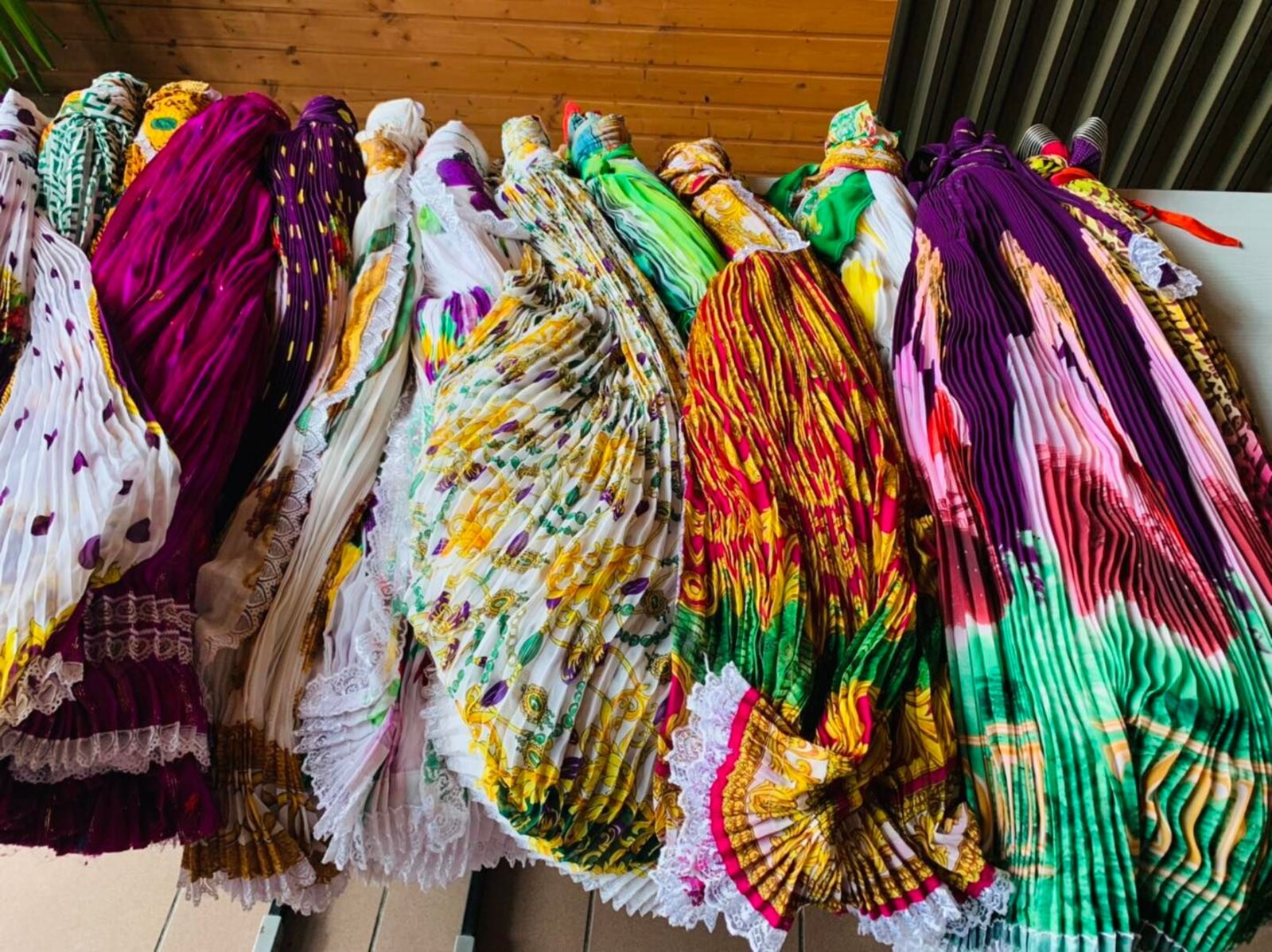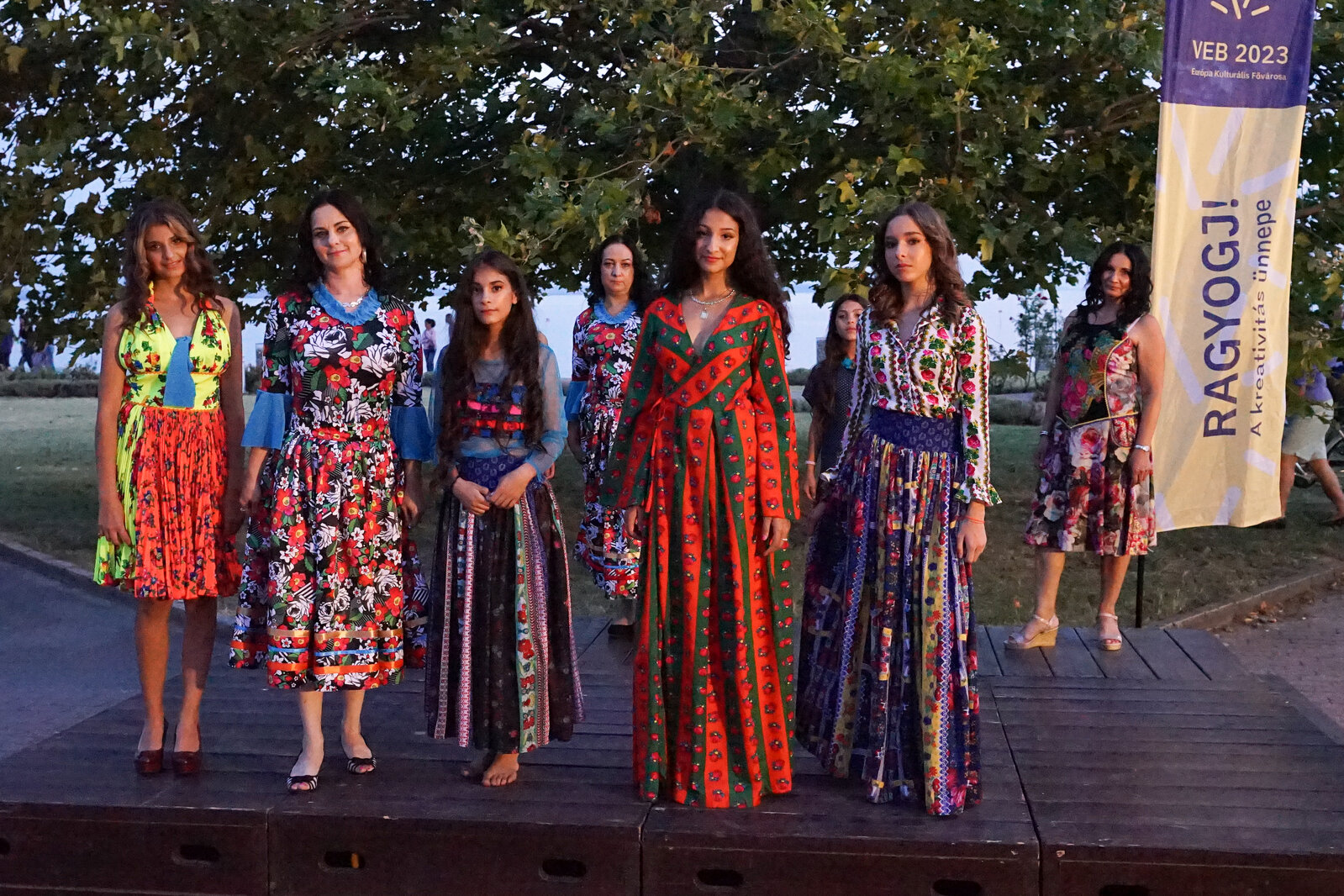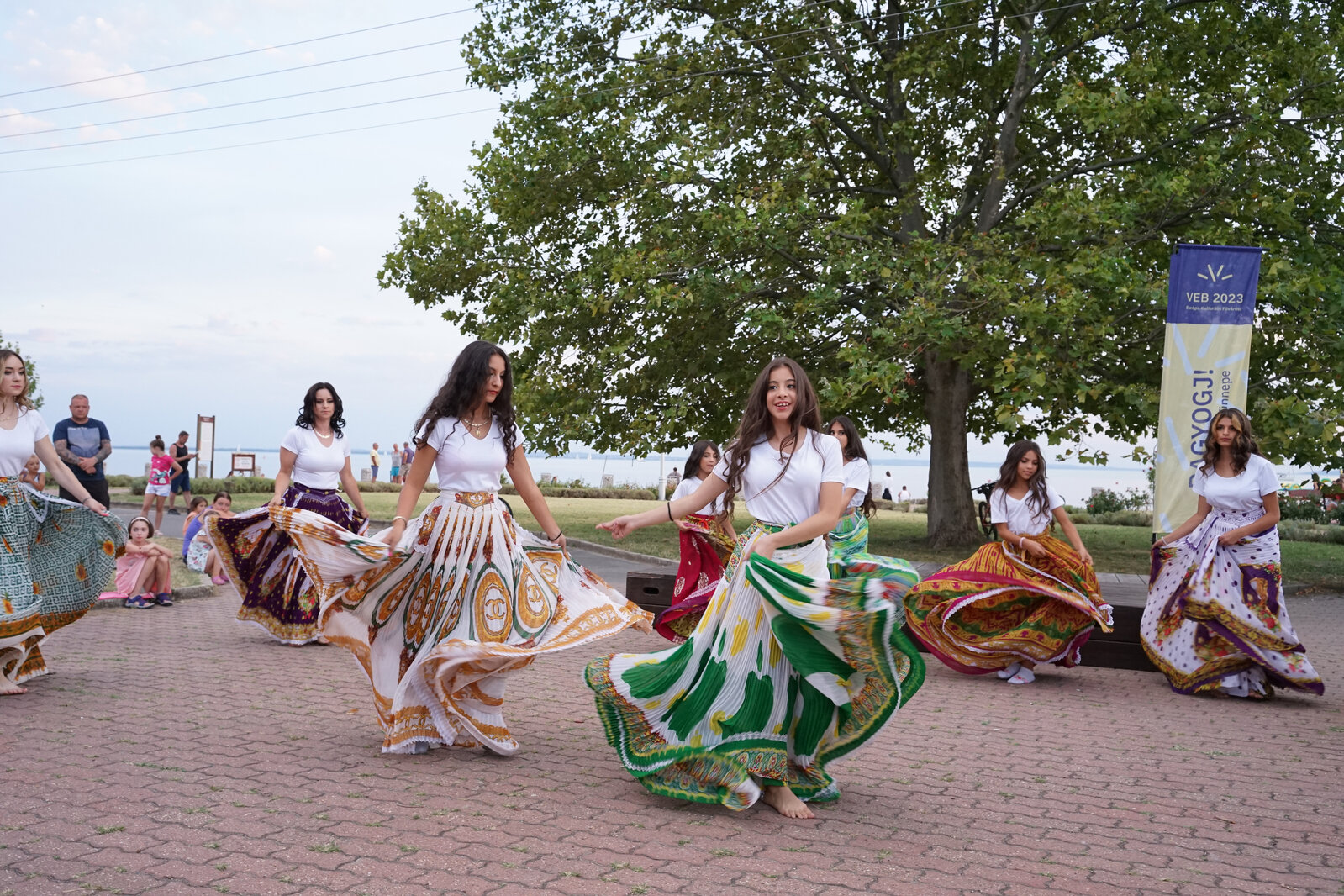"Our main goal is to open up the world through fashion and bring it to the Berhida community." - We spoke with Erika Varga, one of the founders of Romani Design, about the Together for Berhida community-building programme
“Fashion means to me what words mean for writers, colors for painters. Through my clothes I can express my identity and create a world in which I enjoy living.” These thoughts appear on Erika Varga's Romani Design website. In addition to founding her both nationally and internationally renowned fashion brands with her sister, Helena Varga, more than ten years ago, she is playing a meaningful role in the educational and social development of Roma communities.

The Romani Design brand is easily recognisable for its diverse shapes and colours. The very feel of the materials of the distinctive dresses appears to prove that their creators sew their love of fashion and traditions into each piece. As Erika puts it, they intend to use style to bridge different cultures. This is the very idea behind the Together for Berhida programme. She started her initiative in partnership with the Amaro Trajo Foundation and with the financial support of the VEB2023 ECOC Programme. The project's primary mission is to provide unique support to develop Roma culture and community and a unique career orientation form for young talent
Close ties with Balaton
Because of Romani Design, we have been to the Káli Basin quite a lot, and we have countless artisan friends in the region. My talent management work is also partly linked to Lake Balaton because I have been running camps for Roma youth in Balatonszemes since I was 18. I have also been to such camps as a child. In other words, I developed an attachment to Lake Balaton relatively early, although it was much later, when I was already an adult, that I learned to swim in the lake. My sister and I love this area very much. We have held several fashion shows around the lake. I have to say that not only professional experience, but many personal memories tie us to Lake Balaton
- says Erika.
Thus, it is perhaps not surprising that the designers of Romani Design play a leading role in the Together for Berhida programme. Currently, the programme runs at the Berhida Cultural Centre and Library. In the future, they plan to have similar courses in Várpalota and Veszprém. Erika's long-standing wish is to create an organic community-building scheme, which would not simply occupy young people but also aim at career orientation.
"Basically, we want to put the children's new knowledge to work for the benefit of the entire family. You might say that we're not working with children, but rather with families," says Erika. She believes the project can help participants become self-sustainable within a few years, provided that the links to the city's bloodstream, presently missing, are created.

Practice-oriented programmes
The classes, workshops and sessions organised as part of the project are experiential and practice oriented. They allow participants to realise their potential and gain insights into fashion-related professions such as fashion design, costume design, sewing, make-up, hairdressing, photography, acting, performing, or dancing. To achieve these goals, they organised a variety of day camps and live-in camps during the summer school holidays, which were very meaningful parts of talent management.
The sessions functioned as creative laboratories at the Berhida Community Centre and Library, providing a venue for sewing, handicraft and goldsmith training. The leading target group was teenage girls, who were often accompanied by their younger siblings and mothers. Outside mentors and professionals helped participants in their creative endeavours during the programmes.
I believe we can only offer real knowledge and provide potential career orientation to children by creating a vision in their minds. We let them try professions that are not usually available to Roma youth, and this is the opportunity we provide with the help of our professionals. We aim to open the world and bring it to the Berhida community through fashion.

Fashion and handicraft workshops, Latin and gipsy dance classes, instrumental performances, and community cooking with online celebrity chef Zsófi Mautner are examples of future activities. Participants will be able to showcase what they have learned in the sessions at public events, the first of which was the Kenese Art Fest on 12 August. That occasion featured a special fashion show and song and dance performances by the programme's participants.
With these programmes, we want to bring the Roma, marginalised in many ways, whether in terms of infrastructure or education, back into the city's bloodstream. To do this, we must build a well-functioning relationship with city institutions and their leaders. This way, it will become clear what events and artistic activities will engage the community that, by the way, possesses enormous currently invisible or unavailable resources
- says Erika.

Lessons learned from the programme so far
Looking at what has been achieved by the programme to date, Erika reports very positive results. She points to her experience that, without proper training and development, people are unable to spend quality time together and cannot communicate well within the community.
For a marginalised and excluded community, it is quite normal to be frustrated and have grievances; therefore, our top priority is to build trust. Achieving this requires appropriate goals and the right leadership, and I think that we have managed to build that trust at this stage of the programme. Fashion is of common interest. It connects people regardless of their social and existential position, and it is therefore of the utmost importance that we use it wisely as a development tool. Through it, we can have a significant impact on people. From what we are seeing so far, both children and parents have made a lot of progress in how they communicate, use language, and behave towards each other. They have already undergone significant transformation.
